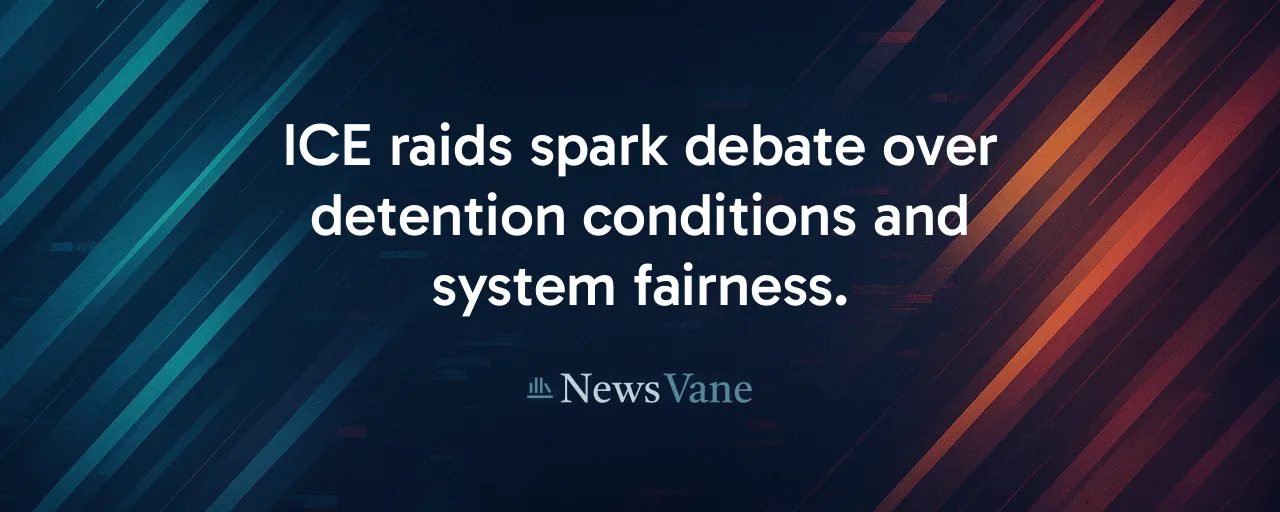Raids Ignite a Firestorm
In June 2025, Immigration and Customs Enforcement swept through Los Angeles, detaining hundreds in a high-profile operation. The Department of Homeland Security quickly pushed back against media reports, calling out what it labeled as false stories about overcrowded cells and neglected detainees. From claims of racial profiling to tales of a six-year-old leukemia patient arrested, the agency aimed to set the record straight. The controversy only deepened, pulling in advocates, policymakers, and everyday citizens.
This clash represents the latest chapter in a decades-long tug-of-war over how the United States handles immigration enforcement. With ICE holding nearly 59,000 people in detention, questions about fairness, safety, and transparency refuse to fade. The core issue is whether the system itself can balance security with humanity, a question that transcends who is telling the truth.
Inside the Detention Debate
Detention centers are at the heart of the storm. ICE insists its facilities meet high standards, offering meals, medical care, and legal access. Internal data supports this, showing regular health checks and oversight that outpaces many state jails. But independent studies paint a mixed picture. Reports from 2024 found remote, privately run centers often face longer detainee stays and more complaints about sanitation or care.
The numbers tell a complex story. Over 40 percent of ICE's beds are over capacity, a strain worsened by court delays. While some detainees face serious charges, nearly half have no criminal record, raising questions about who ends up behind bars. The tension lies in purpose: is detention meant to protect or punish? For many, the answer depends on how the system operates day to day.
The Cost of Enforcement
Money fuels the machine. ICE and Customs and Border Protection spend over $34 billion annually, more than all other federal law enforcement combined. Expanding to a 100,000-bed system, as some propose, could add tens of billions more. Private prison companies, which run many facilities, stand to gain, but taxpayers foot the bill. Meanwhile, local communities near centers grapple with strained resources and rising tensions.
Alternatives exist. Supervised release programs, like ankle monitors or community check-ins, cost a fraction of detention, sometimes less than $10 per day compared to $200 for a cell. Studies show these options achieve similar court-appearance rates, around 90 percent. Scaling them faces hurdles, from political resistance to logistical gaps in rural areas.
Voices From the Ground
Detainees and their families feel the system's weight most. Legal aid groups report cases of prolonged holds without clear charges, especially for asylum seekers. Medical professionals have flagged mental health risks from extended confinement, particularly in isolated facilities. On the flip side, ICE officers face rising assaults, with a reported 500 percent spike linked to heated public rhetoric. Both sides share a grievance: the system's opacity leaves everyone guessing.
Local police, like those in Los Angeles, are caught in the middle. Some argue federal raids disrupt community trust, making immigrants wary of reporting crimes. Others say sanctuary policies tie their hands, delaying responses to federal calls for backup. The disconnect fuels mistrust, with no easy fix in sight.
Lessons From the Past
History offers context. Immigration detention surged in the 1980s with refugee arrivals and grew again after ICE's creation in 2003. By 2019, beds neared 55,000 under Trump's first term. Biden's 2021 policies prioritized serious offenders and shielded schools or hospitals, but those rules vanished in 2025, sparking the latest raids. Each shift swings the pendulum; core issues, backlogs, oversight, and fairness, persist.
Past experiments show promise. Pilot programs for community-based supervision in the 2010s cut costs and kept families intact. Bipartisan efforts in Congress once funded more immigration judges, easing case delays. These examples suggest reform doesn't require reinventing the wheel, just steady commitment.
A System Under Scrutiny
Transparency remains the sticking point. Oversight splits between ICE, contractors, and occasional outside reviews, leaving gaps. Independent audits, like those proposed by humanitarian groups, could track conditions in real time, but they'd need teeth, such as subpoena power and public reporting. Without them, distrust festers, fueling cycles of accusation and defense.
Courts add another layer. With 3.6 million immigration cases pending, delays stretch years. Detainees without guaranteed lawyers often navigate this maze alone. Boosting legal aid and hiring more judges could clear the logjam, ensuring faster, fairer outcomes for all sides.
Bridging the Divide
Common ground isn't a fantasy. Uniform audits of detention conditions, conducted by independent experts, could settle debates over care. Limiting mandatory detention to violent offenders while expanding supervised release for others balances security and compassion. Restoring guidelines to avoid arrests near schools or clinics could rebuild community trust without halting enforcement.
These steps aren't cheap or simple. Audits require funding, alternatives need infrastructure, and court reforms demand bipartisan will. The status quo, costly, divisive, and opaque, serves no one. A system that spends billions deserves scrutiny and solutions that work for everyone.
The path ahead hinges on clarity. If detention centers are humane, open inspections can prove it. If alternatives outperform cells, scale them. The debate over ICE raids aims to build a system that is accountable, affordable, and just. That's the challenge, and the opportunity, staring us down.
